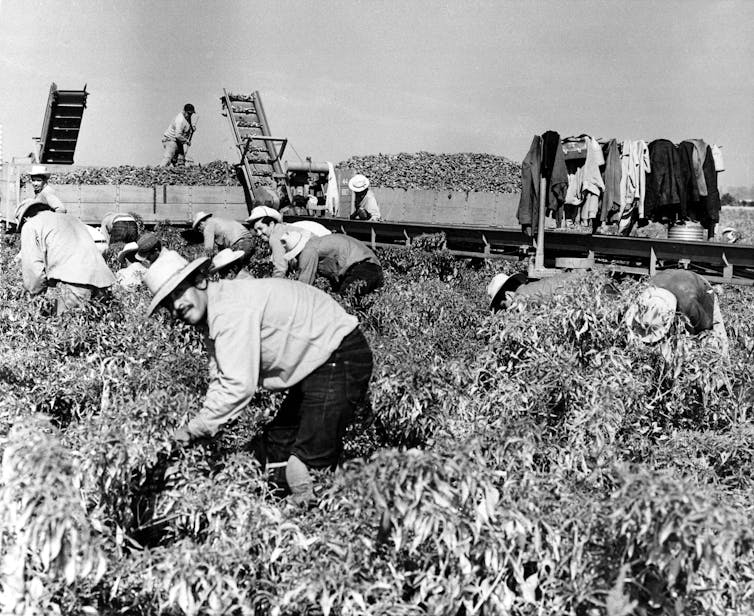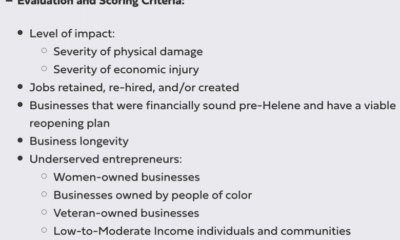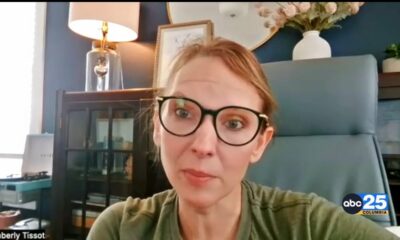
Jimmy Carter shakes riders’ hands in a Mexican American parade while campaigning in Southern California in 1976.
Gabrielle Clark, California State University, Los Angeles
President Donald Trump promised during his three presidential campaigns to deport as many immigrants living in the U.S. without legal authorization as possible.
His second administration got underway less than one month after former President Jimmy Carter died in December 2024. This sequence of events brings to mind, for me – a public law scholar who studies the historical role of foreign workers in the U.S. – the legacy of Carter’s immigration policy and its stark contrast with Trump’s agenda.
Carter left several lasting markers on immigration policy. Among them was that he reformed the H-2 visa, a permit that allows foreigners to legally and temporarily work in the United States for one employer for one year. He did so by striking a new balance between satisfying the needs of employers and protecting American workers from foreign labor competition.
Trump, by contrast, intends to undertake mass deportations. He has stated that his administration will remove millions of immigrants living in the U.S. without legal authorization.
I’m writing a book about the long-standing conflict between employers and workers over allowing foreigners to legally work in the U.S. Despite Trump’s anti-immigration agenda, I won’t be surprised if Republicans follow in Carter’s footsteps by making it easier for more low-wage migrants to get short-term authorization to hold U.S. jobs.
Replacing the Bracero Program
When Carter became president in January 1977, 13 years had passed since the end of the Bracero Program, which let Mexican men legally get short-term jobs on U.S. farms. Demand for that labor persisted after the Bracero program ended, so large farms hired Mexican immigrants living in the U.S. illegally instead.
The AFL-CIO, an umbrella group that most U.S. unions belong to, and the United Farm Workers, a labor union, pressured the Carter administration for immigration enforcement. They were engaged in heated organization campaigns in the fields and wanted to reduce competition from foreign workers.
Carter, a former peanut farmer and a pragmatist, had the Immigration Naturalization Service authorize 5,000 new H-2 foreign labor visas in June 1977. Over 800 of the visas went to onion, melon, pepper and cotton farms in south Texas.
Congress had created the H-2 guest worker visa in 1952 on behalf of owners of large farms and other employers who wanted a path around immigration restrictions and access to a seasonal labor force. In 1965, however, President Lyndon B. Johnson’s secretary of labor, W. Willard Wirtz, had limited H-2 certifications to Florida sugar farms and East Coast fruit orchards.
The total number of foreigners with H-2 visas who were employed in U.S. agriculture fell from 13,578 in 1967 to 11,661 in 1977.
Carter saw things differently than Johnson and Wirtz.
“I believe it is possible to structure this program so that it responds to the legitimate needs of both employees, by protecting domestic employment opportunities, and of employers, by providing a needed workforce,” he told Congress on Aug. 4, 1977.
Mexican migrant workers, employed under the Bracero Program to harvest crops on California farms, are shown working in a field in 1964.
Striking a new compromise
By 1978, the Labor Department had issued H-2 visa regulations that balanced the interests of business and workers.
For employers, they were a boon: For the first time, agricultural employers were entitled to hire foreign workers under the law.
The secretary of labor could no longer eliminate whole crop areas from the program, as Wirtz had done. The reasoning behind the change was simple: The Carter administration wanted to help farms switch from workers living in the U.S. without legal authorization to migrants holding H-2 visas.
Yet, the Carter administration also expanded protections for migrant farmworkers. Their employers now needed to offer them higher wages and better working conditions. The regulations also mandated that employers seeking authority to use the H-2 program try harder to recruit Americans.
Under Carter, the Labor Department also extended the rules to Maine’s lumber industry and western wool producers.
These industries had relied on French Canadians and Spanish Basques to handle much of their work through the H-2 program since the 1950s without having to pay minimum wage rates or recruit American workers first. The Maine Woodcutter’s Association and the Navajo Indian Council had lobbied Carter to address poverty and underemployment in their regions.
United Farm Workers President Cesar Chavez, seen here at a rally in 1985, played a key role in immigration reform efforts over several decades.
Carter and the immigration Reform and Control Act
In 1986, Congress passed the Immigration Reform and Control Act. While that immigration reform law is best known for providing immigrants living in the U.S. without legal authorization a path to citizenship, it also split the H-2 visa program into two parts. From then on, foreign workers could obtain an H-2A visa for agriculture work or an H-2B visa for other kinds of jobs.
The new law kept Carter’s employer obligations in place for H-2As. The AFL-CIO and several civil rights organizations had objected to guest workers having to depend on their employer for their immigration status, which could make them more vulnerable to exploitation.
It is a historical irony that President Ronald Reagan, who signed the bill into law, is associated with the reform because the measure originated with Carter.
President Ronald Reagan prepares to sign a landmark immigration reform bill in 1986. Behind him were members of Congress and Vice President George H.W. Bush.
Reforming immigration policies vs. mass deportations
The population of foreign laborers working on U.S. farms with H-2A visas soared from around 26,000 in 1989 to more than 340,000 in 2023. Because the number of H-2A visas the government can issue is unlimited, this arrangement has become an alternative to employing workers living in the U.S. without legal authorization.
The number of foreign workers with H-2B visas is much smaller.
This is because Congress limited the number of people who could get them to 66,000 per year in 1990 as a way to limit competition for American workers seeking or holding down low-wage jobs. In 2017, Congress gave the president the authority to double the maximum number of H-2B visas.
As Trump’s deportations get underway in 2025, I believe that the maximum number of H-2B visas available is likely to become a point of contention among Republicans as Trump and many GOP members of Congress face Carter’s dilemma.
Many Americans, perhaps a majority, want immigration laws enforced. But employers will continue to demand low-wage labor for jobs that U.S. citizens may be reluctant or unwilling to do.
Maintaining a compromise
This time, the mismatch between the government’s efforts to deport foreigners living in the U.S. without authorization and employers’ desires for low-cost labor will be greatest outside of agriculture: 69% of those workers without papers today are employed in construction, food services and other parts of the hospitality industry.
Jason Miller, one of Trump’s senior advisers, has conceded that Republicans will need to take a “second look” at the visa.
In my view, guest worker visas, like the H-2A and H-2B, are never ideal. They can displace American workers and make migrants vulnerable to exploitation by their employers.
However, the U.S. is likely to continue to expand employer access to the visas because they provide an alternative to foreign workers seeking to get jobs in the U.S. without authorization. In this way, Trump’s presidency may end up having something in common with Carter’s time in the White House.![]()
Gabrielle Clark, Assistant Professor of Political Science and Public Law, California State University, Los Angeles
This article is republished from The Conversation under a Creative Commons license. Read the original article.
























































